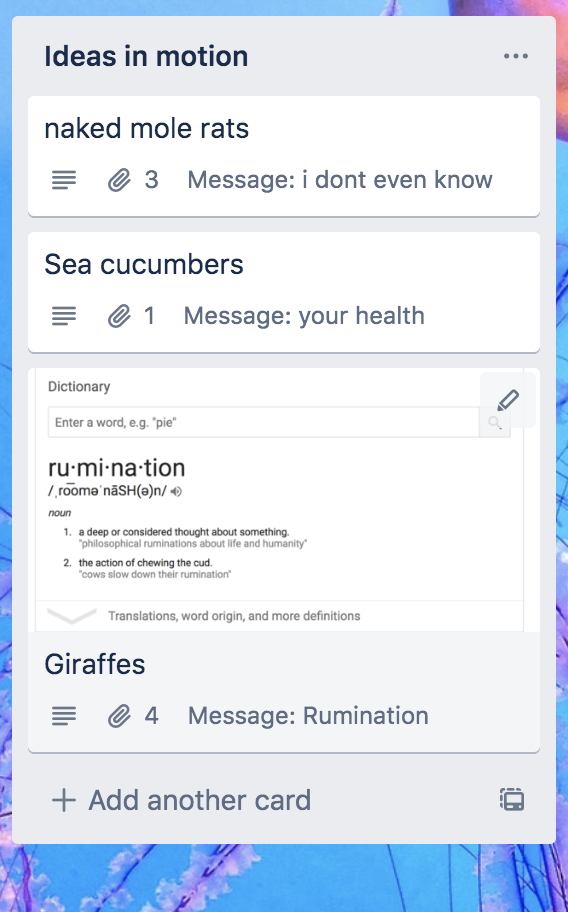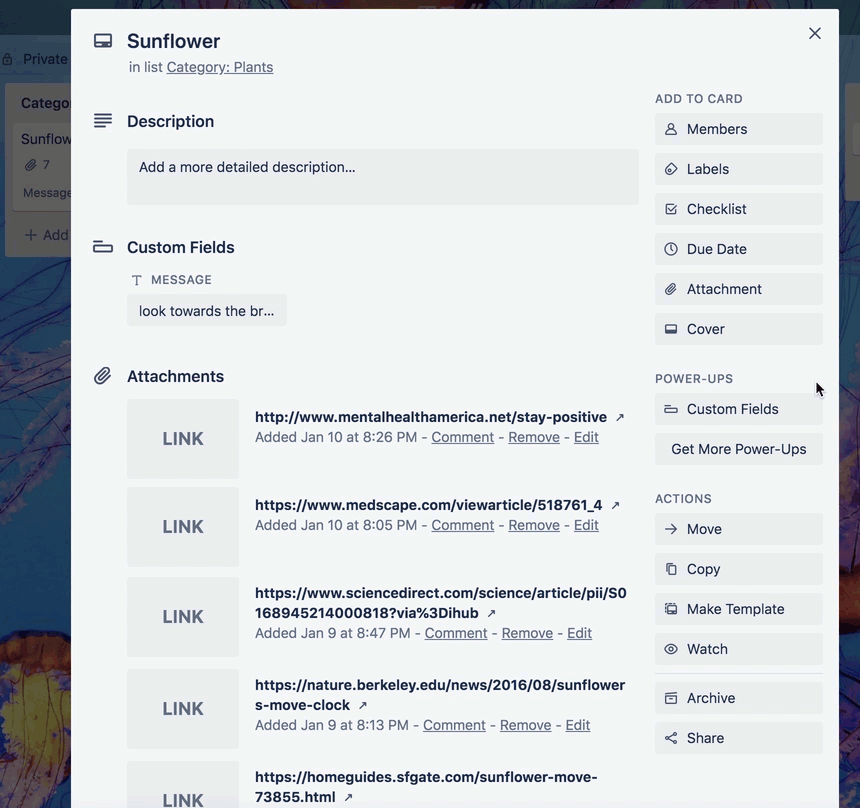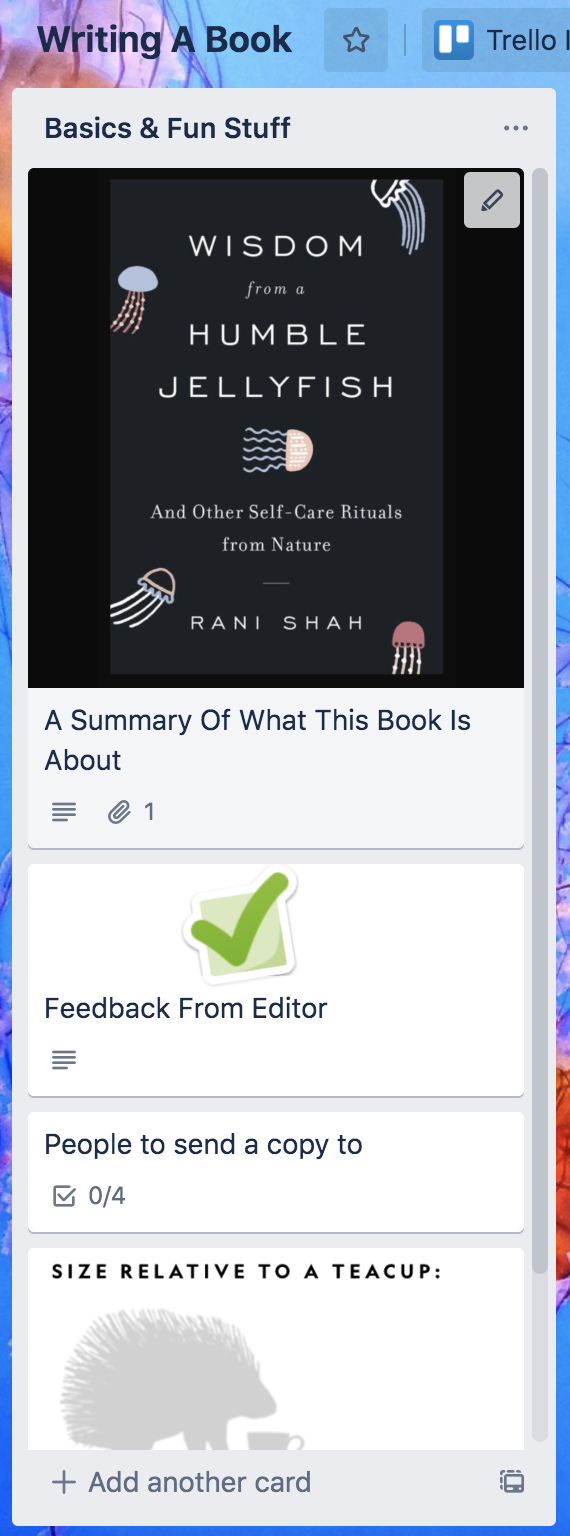First things first: there is no right way to write a book, or write anything for that matter.
For some, writing looks romantic: sitting near a picturesque seaside, on a vintage desk, with a cup of coffee (at perfect sipping temperature) in hand.
For most, writing looks intimidating: looking at your blank word processor of choice, at a desk in your home or some other co-working space, surrounded by notes, some (probably cold) coffee, and endless distractions.
Nevertheless, we persevere and internally (sometimes externally) scream at ourselves to “just get one more sentence on the page dammit!”
But, behind the scenes, there is a story to be told and there is a method to the madness of writing a book.
I wrote a book this year. Yes, a complete and finished final draft that is now heading to layout and print.
My method of success was to create a (somewhat organized) Trello board to help structure both the format of the book I was writing, and also my day-to-day schedule—because holding yourself accountable to meet your writing deadlines is an entire project in itself.

Ready, Set, Write!
A non-fiction book may have a very different structure from a fictional plot. The book I wrote is a non-fiction piece, regarding nature and self-care. While I didn’t have to structure character development or plot lines, I used Trello as an idea, resource, and progress repository for my writing process.
Whether your future literary masterpiece is fictional or non-fictional, here are some suggestions for how to organize all those ideas, research resources, and your progress until it hits the printers!
Wisdom From My Humble Trello Board
My book, Wisdom From A Humble Jellyfish, is organized into chapters, with each chapter being a deep dive into a specific animal’s behavior.
Not only is their behavior described, but I also relate their unique tendencies back to how we humans can learn from them in terms of self-care. Which meant that after learning about many, many creatures, I’d have to put my thoughts about self-care… somewhere.
This required me to:
- Research animals en masse in order to gather ideas about which species to focus on
- Store and save that research somewhere so I could reference back to it
- Jot down which self-care principles can be reflected back
- Create an outline for that animal/chapter in order to gauge how long it would take to write that portion
Let’s take a look at my Trello workflow by list to explore how I organized my thoughts, research, and ideas in order to write this book.
Ideas
As many writers and creatives know, ideas can either come all at once, barely at all, or when you least expect them. How are you supposed to organize them while also trying to organize your words on a page AND your deadlines?
My solution was to create specific lists on my Trello board meant only for ideas—not only so that I wouldn’t forget them, but also because I tend to get distracted when a new thought enters my head while I’m already writing another section.

As you can see by the Naked Mole Rat card, not all my ideas were perfectly fleshed out. In all likelihood, most of your ideas won’t be picture-perfect either, and that’s OK!
The best thing about using Trello for this framework is that it gave my messy thoughts a home. By being able to document them easily and clearly, I had the space I needed to develop them further over time.
Resources
Whether it’s links to scientific journals or a tweet you saw that one time—making sure you have your resources saved is crucial for when you get in the writing zone. If your editors are asking to clarify a concept or fact-check, it’s best to have all the sources you reference in one spot.
I would simply store all the links and articles I read in the card specific to each section. If your book is the type that will have an index, making sure you have all your research easily accessible will save you days, even weeks, of time!

The cards in the Ideas In Motion list were the ones that weren’t fully researched or fleshed out in any way.
Once I felt that the idea or topic had enough sources backing it, I would then move that card to another list category (Rodent, Insect, etc.— It just depended on which type of animal/creature it was) which would be my indication that the topic was ready to be written about.
With all those links though, it’s tough to remember the parts you actually found useful! For moments like that, I’d be sure to have the important information in the Description section of the card so you can recall the points you need in a quicker fashion.

Ruminate on that.
Progress
Writing a book is often romanticized. It’s seen as this process in which you turmoil over your words dramatically and somehow, eventually submit a manuscript that blows the critics away.
While the former is totally true—the turmoil is real—creating a manuscript and submitting it when it feels “right” just isn’t accurate. In truth, deadlines often run the show.
Deadlines are the true struggle of organizing any large piece of written work. Managing your progress and time allotted for each milestone is almost as tough to manage as the writing itself.
Using Trello in a Kanban fashion is what got me through making (most of) my deadlines and many rounds of editorial feedback.
Once a section/animal was put into my To Do list, rather than assign a date right away, I would plan out the week in a flexible fashion so that I could work on what I “felt” like. Sounds wishy-washy but this worked for me because I worked on what I had the energy for while still meeting my deadlines and goals (at least most of the time, life tends to have its own schedule let’s be real.)

While a card was simmering in the Finish This Week list, I would be, well, writing. Cards would be moved to the coveted Done list as soon as that section was completed.
Once any edits came in from my editors, I’d repeat this process—however this time, having a due date assigned was important to me, as approving edits can be deceivingly time-consuming.
The Good Parts
While my overemphasis on the tough parts of writing a book are evident, it’s important to focus on the wonderful parts as well. This is why I made sure to have a Basics & Fun Stuff section on my board. This section is a reminder of the big picture for when you get stuck as well as a place where you can get carried away (in a good way).
I highly recommend having a place to put positive feedback, a checklist to fantasize about the people in your life that you want to send a copy to, and even a card that is simply a summary of what you’re writing so you can always have a guiding light of sorts.

This Trello board format helped me go from concept to the first manuscript, to the final draft, in just one year. While it’s not perfect (much like all our first drafts), I hope this board is a launching pad to the first (or second!) of your many book deals. Just like your writing flow, your Trello board can ebb and flow with your own style and processes.
Happy writing and, oh, of course, if you’d like to explore the fruits of my Trello board’s labor then check out Wisdom From A Humble Jellyfish.
✍️ Stuck in the writing weeds? Commit to writing your book this year by using this Trello template:
Good or bad, we’d love to hear your thoughts. Find us on Twitter (@trello) or write in to support@trello.com
Next: Make Your Process Perfect With Trello Templates, Plus Community-Inspired Gallery
